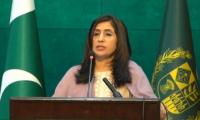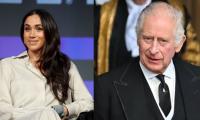Israelis are getting ready to head to the polls for the second time in 2019. Israel’s last national elections were five months ago in April, ending in a razor-tight finish with Netanyahu’s Likud party winning 35 Knesset seats and the Blue and White party winning 35 Knesset seats.
The remaining 50 Knesset seats were won by smaller parties, with the majority going to right and far-right parties that had previously been in a coalition government with Likud. Netanyahu was awarded a continuation of his prime ministership and tasked with forming a coalition.
Unexpectedly, after more than a month of failed negotiations – the unresolvable issue was whether Israel’s ultra-Orthodox population would continue to be exempted from military conscription – for the first time in Israel’s history no post-election government was successfully formed. On May 30, the Knesset was again dissolved and another snap election scheduled for Tuesday, September 17.
Much of this second round of election campaigning is a repeat of what that took place in the runoff to the April vote. The two main contenders remain, Benjamin Netanyahu – as of this year Israel’s longest-serving prime minister – and former IDF general Benny Gantz of the “centrist” Blue and White party. Like the lead-up to April’s election, both campaigns have been rife with racist incitement.
During the runoff to April’s election, Gantz released a video bragging about his achievements of “sending parts of Gaza back to the Stone Age.” For this round, a Blue and White party ad slammedLikud for considering alliances with the Hadash-Ta’al and Ra’am Balad parties (parties led by Palestinian citizens of Israel) during 11th-hour attempts to form a government following the April vote.
Never to be outdone in inciting racism, Netanyahu last week was sanctioned by Facebook for going so far that he violated the platform’s rules against hate speech when his page sent out automated messages warning of “Arabs who want to destroy us all.” In August, Likud, complaining of Palestinian citizens of Israel trying to steal the election, introduced legislation to install surveillance cameras in voting booths.
On September 5, speaking to the extremist settler community of Hebron – the first time ever that an Israeli prime minister has visited Hebron – Netanyahu promised the settlers they would remain. “Hebron will not be devoid of Jews. It will not be ‘judenrein”, he vowed, reinforcing his campaign promise to not dismantle a single settlement in the West Bank. On September 10 he went even further, stating that if re-elected he will annex the Jordan Valley immediately.
None of this is new. During the April vote, Likud representatives placed 1,200 hidden cameras in polling booths located in communities where Palestinian citizens of Israel live and later bragged that they had succeeded in lowering voter turnout among Arabs. Leading up to the April vote, Netanyahu had bluntly declared that “Israel is not a state of all its citizens,” explaining that the inequalities between Jewish and Palestinian citizens of the state were intentional and would remain under his rule. During Israel’s 2015 election, Netanyahu had warned Jewish voters that “Arab voters are coming out in droves to the polls.”
But how many “Arab voters” (aka Palestinian citizens of Israel) are there and how many Palestinians living under Israeli rule don’t have the option of citizenship and won’t be able to vote on Tuesday?
Twenty percent of Israeli citizens are Palestinian. Despite such grotesque racism as surveillance cameras in polling stations, they are able to vote in Israeli national elections and have representation in Knesset. But they are only one-third of the Palestinians living under Israeli rule and military occupation.
Excerpted from: ‘Israel: Two Elections, One Apartheid State’.
Courtesy: Commondreams.org
People stand in line up as election officials check their ballot papers during voting general election at a polling...
Women show their voter identity cards as they stand in a queue before casting their votes in Agartala. — PTIThe 18th...
Former prime minister Imran Khan. — Instagram/ imrankhan.ptiAn old saying has it that “when you dance with the...
Kashmiris in Indian illegally occupied Kashmir protesting against the Indian occupation as the forces of India looked...
A representational image showing residents walking at a wholesale market in Karachi. — AFP/FileOnce again there is...
A representational image showing late Pakistani human rights activist and Supreme Court lawyer Asma Jahangir. —...







